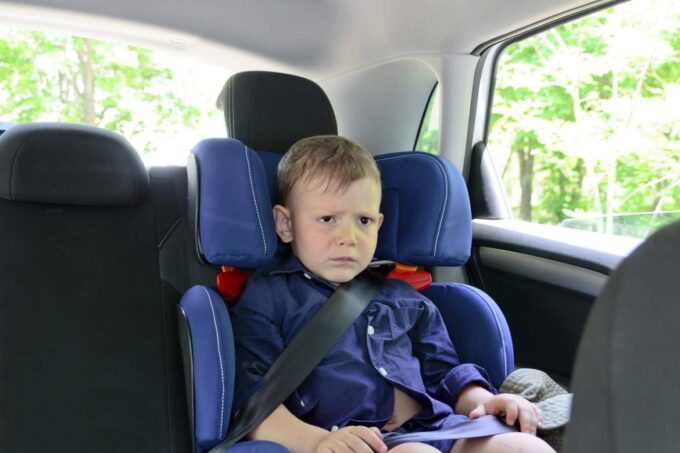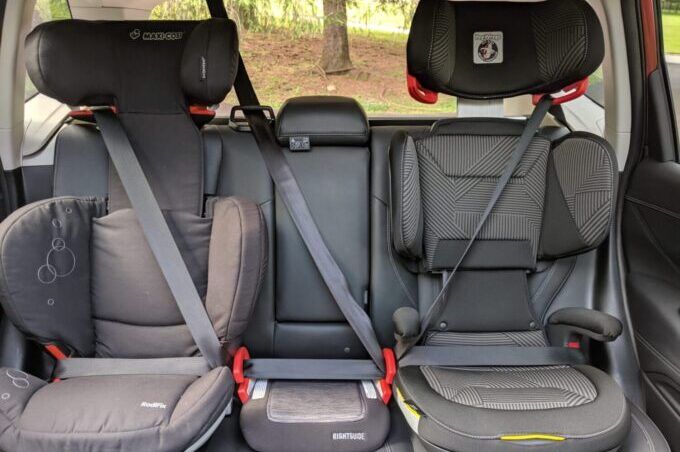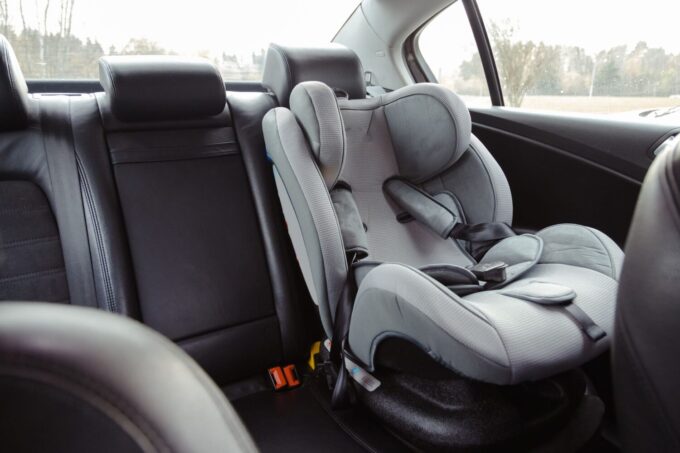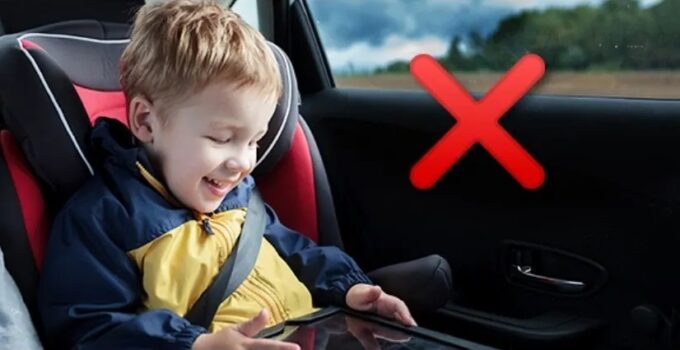Every parent internalizes the mantra: “Safety first.” In our vehicles, where unpredictable incidents can occur, we rely on car seats to safeguard our most precious cargo: our children. Car seats, specifically crafted to protect youngsters from the unpredictable nature of road mishaps, have cemented themselves as quintessential symbols of parental protection.
However, a tool’s efficiency is only as commendable as its user. Our effectiveness in using car seats pivots around our comprehensive understanding and attention to detail. This enlightening “Car Seat Confessions” series aims to spotlight common pitfalls and present proactive solutions, fortifying the safety net around our children.
Choosing the Right Car Seat for Your Child
The current market presents a dazzling array of car seat options, tailored for varying age groups, weights, and statures. For the tiniest members of our family, infant car seats are designed to be rear-facing, perfectly cradling newborns. As they grow, convertible seats offer flexibility, commencing as rear-facing before transitioning to forward-facing.
Then come the booster seats, designed to elevate older children ensuring seat belts sit correctly across their bodies. Poring over the car seat’s manual and aligning it with your child’s age, weight, and height remains pivotal in making an informed decision. But a word of caution: while sleek designs might be tempting, prioritize safety. Commit to seats that not just meet but surpass safety benchmarks.
Installation Blunders: Avoiding Common Setup Mistakes

Source: cars.com
The integrity of a car seat’s protective capability is compromised when its installation isn’t spot-on. Some frequently occurring mistakes encompass:
Not securing the car seat firmly in place. A correctly installed seat should exhibit minimal movement, certainly no more than an inch in any direction.
Incorrect routing of seat belts, which undermines the seat’s stability.
Overlooking the designated belt path specific to your car seat’s design.
Counteracting these pitfalls requires meticulously following both the car seat’s instructional manual and your vehicle’s owner manual. To further bolster confidence in your installation skills, think about attending car seat inspections. Here, seasoned professionals can scrutinize and affirm your setup.
The Buckling Dilemma: Proper Harnessing Techniques
The act of strapping in your child might come across as rudimentary. However, the devil lies in the details. It’s imperative to ensure that the harness snugly fits, eliminating any slack. Position the chest clip so it aligns with your child’s armpit, ensuring it’s neither too high nor low. Moreover, consistently check for twisted straps; their presence can severely hamper uniform force distribution during an accident, leading to potential harm.
Rear-Facing vs. Forward-Facing: When to Make the Switch
Statistics underscore the amplified safety of rear-facing seats, particularly during frontal impacts – the most prevalent type of collisions. Advocates recommend children stay in the rear-facing orientation until they outgrow the stipulated weight or height limit of the seat. This often corresponds to around age 2, though many surpass this age benchmark. It’s worth noting that transitioning from rear to forward isn’t solely age-centric; physical growth metrics are equally consequential.
Car Seat Safety on the Go: Avoiding Travel Mistakes

Source: thecarseatlady.com
Journeying afar? Uphold your car seat vigilance. When contemplating car rentals, it’s judicious to transport your personal, or travel car seat rather than resorting to rental options. The murky history of rental seats carries inherent risks. While airborne, selecting FAA-approved car seats ensures superior safety, markedly outclassing the protection offered to lap-held infants or the generic airplane belts.
Car Seat Expiration Dates: Why They Matter
Just as food items have shelf lives, car seats are bound by an expiration timeline. As years roll by, the structural integrity of materials can degrade, the constantly evolving safety standards might render older models obsolete, and the seat’s overall protective capability can diminish. Operating a seat post its expiration date is akin to playing with fire, risking the wellbeing of your child. Therefore, it’s imperative to regularly check the seat for its clearly marked expiration date, and to remain steadfast in ensuring its replacement once this date is reached.
Aftermarket Accessories and Modifications: Yay or Nay?
Many parents are drawn to the charm of enhancing car seats with adorable aftermarket products. While these might elevate aesthetics, there’s a lurking danger. Many of these add-ons haven’t undergone the same rigorous safety testing, potentially compromising the seat’s core protective function. Hence, wisdom lies in selecting only those accessories that have been sanctioned or recommended by the original car seat manufacturer. This ensures the safety integrity remains uncompromised, placing your child’s well-being at the forefront.
Car Seat Recalls: Staying Informed and Acting Swiftly

Source: buckeyeaccidentattorneys.com
Like any other consumer product, car seats too can fall under the shadow of recalls. It might be due to manufacturing defects or other concerns. For vigilant parents, the best course of action is to register their newly purchased car seat with its manufacturer. This seemingly small step facilitates prompt communication regarding any safety issues or recalls. Should your specific model be subject to a recall, it’s paramount to act without delay, following the manufacturer’s guidelines to rectify the situation and ensure the seat remains safe for use.
Common Misconceptions About Car Seat Safety
The world of car seat safety isn’t immune to myths and misunderstandings. Some parents might believe, “If my child’s legs touch the seat back, it’s time to transition to forward-facing,” or “Thicker winter clothing offers enhanced protection during crashes.” Dispelling the first, leg contact doesn’t determine the switch; instead, weight and height are crucial. As for the second belief, bulky clothing can actually hinder the snug fit of harnesses, potentially compromising safety during abrupt stops or accidents.
Extended Rear-Facing: The Benefits and How to Do It Safely
Championing extended rear-facing (maintaining kids rear-facing beyond the typical age 2 threshold) is grounded in its demonstrable protection during frontal collisions. Parents gravitating towards this approach should vigilantly monitor to ensure their child doesn’t breach the seat’s weight or height ceilings, all while ensuring the child’s comfort.
Car Seat Safety for Older Children: Boosters and Seat Belts

Source: verywellfamily.com
The progression from car seats ushers in the era of booster seats, architecturally designed to elevate children for optimal seat belt alignment. Children should reside in boosters until seat belts seamlessly fit them sans the booster – commonly when they scale 4’9″ in height. Beyond boosters, an onus lies in educating children on seat belt significance, ingraining the habit as a lifelong safety ritual.
In the intricate tapestry of parenting, knowledge emerges as an empowering tool. In the domain of car seat safety, such knowledge metamorphoses into an invaluable peace of mind. Exhibit diligence, remain au courant, and eternally prioritize your offspring’s safety over all else. Once you pick and secure your child’s seat properly, it is time to head down the road. Chek out our article that will show you useful car gadgets and accessories that could be of use for your long journeys.







